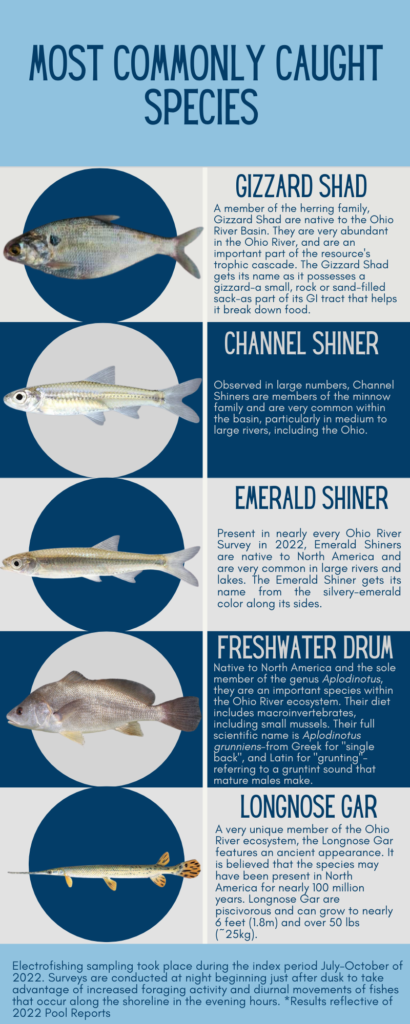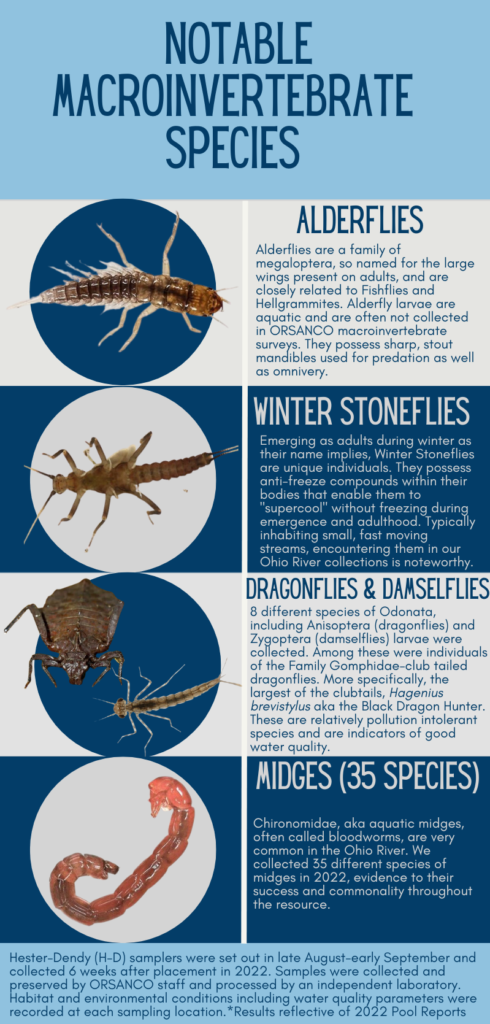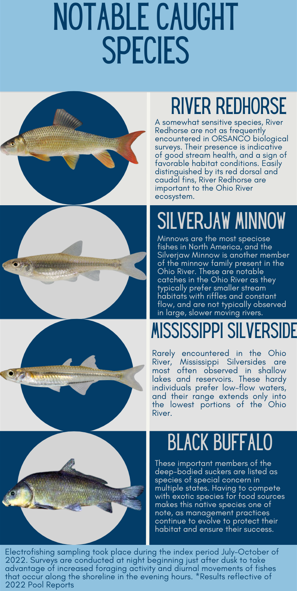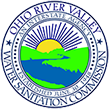The Ohio River Aquatic Ecosystem
The channelization of the Ohio River in the early 19th century which allowed for industrial, agricultural, and urban development resulted in negative impacts to the river’s aquatic ecosystem. The associated habitat fragmentation and degradation of water quality led to declining abundances and species loss. Through legislation such as the groundbreaking Clean Water Act of 1972, and collaborative efforts of ORSANCO and its partners, water quality improved allowing the Ohio River to regain some of its lost biodiversity. ORSANCO biologists work to ensure that the Ohio River continues to maintain a healthy aquatic community, which currently includes more than 160 fish species and over 45 mussel species.
The primary means by which biologists determine the health of the aquatic community is through annual biological surveys and assessments. Beginning in 1993, ORSANCO developed and implemented a method to compare fish and environmental data sampled from various navigational pools of the Ohio River. In 2003, ORSANCO developed the Ohio River Fish Index, which was subsequently modified in 2008 to become the mORFIn (modified Ohio River fish Index). In 2015, ORSANCO staff began employing the Ohio River Macroinvertebrate Index (ORMIn) to assess another component of the Ohio River aquatic community. Macroinvertebrates include creatures like adult and larval insects, arthropods, worms, crustaceans, and other invertebrates. They spend all or most of their lives in the river and being less mobile than fishes, are often more sensitive to changes in their environment. These two indices are collectively used to assess the relative health of the aquatic community of each Ohio River navigational pool.
Each year, ORSANCO biologists collect water, physical habitat, and biological data from multiple navigational pools. These data are primarily collected at 15 random sampling locations within each pool. Fish are captured, identified, measured, and inspected for any abnormalities prior to release. Macroinvertebrate samples are collected from those same locations and delivered to a contractual laboratory for identification and enumeration. From these data, various aspects of each assemblage (e.g. diversity, abundance, and pollution tolerance) are assigned a numeric value. These scores are averaged across the 15 locations and compared against a criteria which represents a baseline healthy Ohio River community. The condition of each assemblage can be determined based on how each pool performs relative to this baseline criteria.
View annual Pool Assessments here:
https://www.orsanco.org/publications/pool-assessments/
ORSANCO Macroinvertebrate Data
Examples of population survey results:




